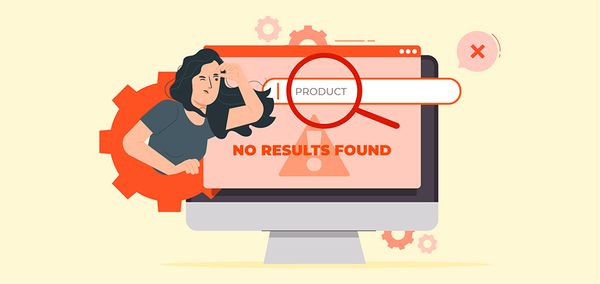Stepwise Guide on How to Host Your Own Website

In today's digital age, a website is essential for individuals and businesses. While the idea of hosting your own website may seem daunting, it doesn't have to be.
With the right tools and knowledge, anyone can host their own website and take control of their online presence. Let’s check out how to host your own website in this guide.
Why Do You Need to Host Your Own Website
Hosting your own website can provide several benefits, depending on your goals and the nature of your website. Here are some reasons why you might choose to host your website:
- Cost savings: Depending on your needs, hosting your own website may be more cost-effective. While some upfront costs are associated with hosting your website, you can save money over time by avoiding monthly fees and other expenses.
- Customization: When you host your website, you have complete control over the design, functionality, and content of your site. This means you can customize your website to reflect your brand and add features and functionality specific to your needs.
- Independence: When you use a third-party website builder or hosting service, you are often limited by their terms and conditions, and you may be at the mercy of their business decisions. Hosting your own website gives you more independence and control over your online presence.
- Scalability: If you expect your website to grow over time, hosting your website can give you more flexibility to scale your site as needed. You can choose a hosting plan that fits your needs and upgrade to a larger one as your traffic grows.
- Security: When you host your own website, you have more control over the security of your site. You can choose the proper security measures for your site to protect your data from cyber threats.
How Much Does It Cost to Host a Website
The cost of hosting a website can vary depending on several factors, including the hosting provider, the type of hosting plan, the amount of storage and bandwidth you need, and any additional features or services you require. Here are some typical costs associated with hosting a website:
Hosting: You can choose between some standard options like:
- Shared hosting ($3 - $10 per month, depending on the hosting provider and the features included in the plan).
- VPS hosting (Virtual Private Server costs between $10 to $50 per month, depending on the hosting provider and the number of resources you need).
- Dedicated hosting (Dedicated hosting plans can range from $80 to $500 per month or more, depending on the hosting provider and the server configuration).
Domain name: Besides hosting costs, you must purchase a domain name for your website. Domain names typically cost between $10 to $20 per year, depending on the domain extension (.com, .org, etc.) and the registrar.
Additional features: Some hosting providers offer other features and services, such as website builders, SSL certificates, and backup services. These features can add to the cost of your hosting plan but may be necessary depending on your website's needs.
Detailed Steps on How to Host Your Own Website
Hosting your own website can seem daunting at first, but with the right tools and resources, it is a manageable task. Here are the steps you can follow to host your own website:
Step 1: Choose a Domain Name
The first step in hosting your website is to choose a domain name. Your website's internet address is determined by its domain name. A name that is simple to remember and pertinent to your business or specialty is crucial since it will be the name people use to discover your website.
| Get Started Now to Grow Your Online Business with the Best AliExpress Dropshipping Tool - DSers! |
When choosing a domain name, you can use some domain registrars like Namecheap, GoDaddy, or Google Domains. These registrars offer a search function to check if your desired domain name is available. You can try variations or extensions like .net, .org, or .co if unavailable.
Step 2: Choose a Hosting Provider
Once you have your domain name, the next step is to choose a hosting provider. A web hosting provider is a company that hosts your website's files and makes them accessible on the internet.
Different types of hosting are available, including shared hosting, VPS hosting, dedicated hosting, and cloud hosting. When choosing a hosting provider, you can compare different providers based on their features, pricing, and customer support.
Shared hosting is the most popular and affordable type of hosting. It means that your website shares a server with other websites, which can affect your website's speed and performance. VPS hosting is a more powerful option that offers dedicated resources for your website. Dedicated hosting is the most expensive option that gives you complete control over the server. Cloud hosting is a scalable option that uses multiple servers to host your website.
Step 3: Choose a Hosting Plan
Once you have chosen a hosting provider, the next step is to choose a hosting plan. Hosting plans differ in the amount of storage, bandwidth, email accounts, and other resources you get. You can choose a plan that fits your needs and budget.
If you're just starting, a shared hosting plan is usually sufficient. It's affordable and offers enough resources for a small website. As your website grows, you can upgrade to a more robust plan like VPS or dedicated hosting.
When choosing a hosting plan, consider the following factors:
- Storage: The amount of disk space you need to store your website's files, images, and videos.
- Bandwidth: The amount of data transfer your website needs. You need more bandwidth if your website has a lot of traffic or large files.
- Email accounts: The number of email accounts you can create with your hosting plan.
- Support: The quality of customer support offered by the hosting provider.
Step 4: Set up Your Website
Once you have your domain name and hosting plan, you can build your website. You can either hire a web developer to create a custom design or use a website building tool like WordPress, Wix, or Squarespace. With a website builder, you can choose from pre-designed templates and customize them to fit your brand.
The basic process for this step is installing the content management system (CMS), choosing a theme, then customizing your website. After that, you can start advanced configurations like SEO, page, and product settings.
Here are some important factors that you should consider when customizing your website:
- Keep it simple: A simple website design is easier to navigate and loads faster. Avoid using too many flashy graphics or animations that can distract your visitors.
- Make it mobile-friendly: As more people use their mobile devices to access the internet, it is crucial to ensure your website appears excellent on smartphones and tablets. Use a responsive theme and test your website across many platforms.
- Use high-quality images: Images can make your website more engaging, but they can also slow down your website if they're too large. Use high-quality images that are optimized for the web.
- Include a call-to-action: A call-to-action (CTA) is a button or link that prompts your visitors to take a specific action, such as signing up for a newsletter or buying a product. Make sure your CTA stands out and is placed in a prominent location on your website.
Step 5: Upload Your Website to the Server
Once you have created your website, the next step is to upload it to your hosting server. You can use an FTP (file transfer protocol) client. FTP protocol allows you to transfer files between your computer and the hosting server.
Step 6: Test Your Website
Once you have uploaded your website, the next step is to test it to ensure everything works correctly. You can do this by typing your domain name into a web browser and checking if your website loads correctly. Make sure to test your website on different browsers like Chrome, Firefox, and Safari, as well as devices like desktops, laptops, tablets, and smartphones.
Here are some things to check when testing your website:
- Navigation: Make sure your website's menu and links work correctly.
- Content: Check if all your website's content is displayed correctly and if there are no errors or broken links.
- Forms: If your website has a contact or other forms, test them to ensure they work perfectly.
- Speed: Use a website speed test tool like Google PageSpeed Insights or GTmetrix to check your website's loading speed. A slow website can affect your user experience and SEO ranking.
Step 7: Maintain Your Website
Once your website is up and running, the next step is maintaining it to keep it secure and up-to-date. This includes:
- Backing up your website regularly: By backing up your website, you can be confident that in the event of a server breakdown or other problems, you will still have a copy of the website's files.
- Updating your website's software: Make sure to regularly update your website's CMS, plugins, and themes to fix security vulnerabilities and improve performance.
- Monitoring your website's performance: Use tools like Google Analytics to monitor your website's traffic, bounce rate, and other metrics.
- Securing your website: Install security plugins and SSL certificates to protect your website from hackers and malware.
- Creating new content: Regularly creating new content, such as blog posts or product updates, can keep your website fresh and engaging for your visitors.
Final Words
How to host your own website can be a challenging but rewarding experience. By following the steps outlined above, you can create a website that reflects your brand and meets the needs of your visitors.
Remember to choose a reliable hosting provider, create a website that is easy to navigate, and maintain it regularly to keep it secure and up-to-date. You can create a successful website that helps you achieve your goals with patience and hard work.
Discover more helpful information for your online business on DSers Blog.













 Company
Company
 Why Choose DSers
Why Choose DSers
 Blog
Blog
 Help Center
Help Center




 Live Chat
Live Chat